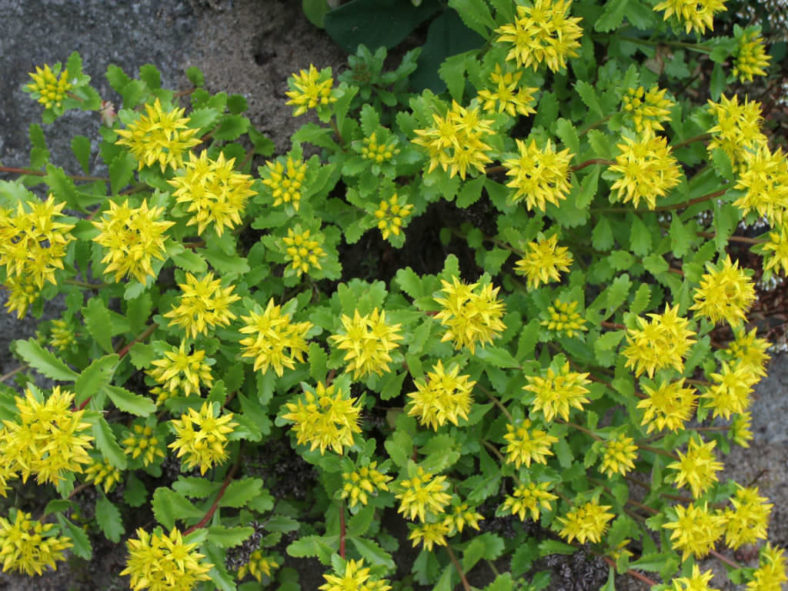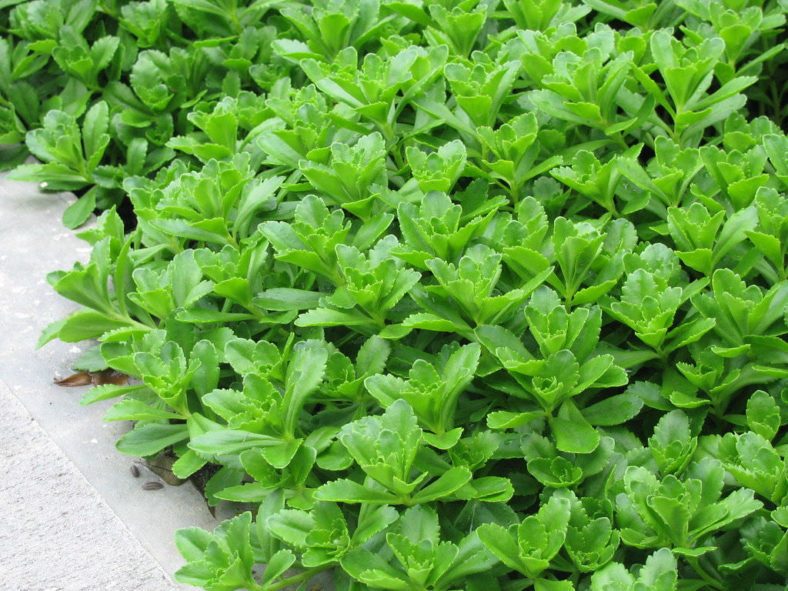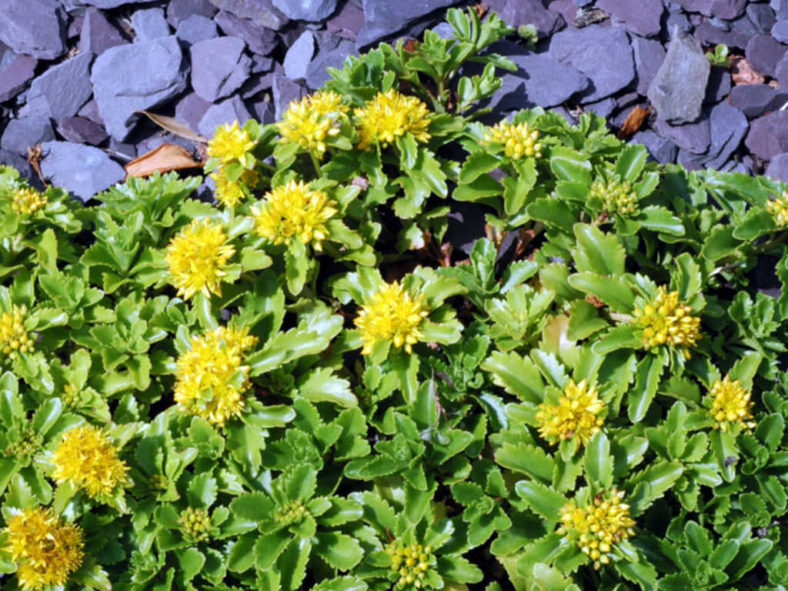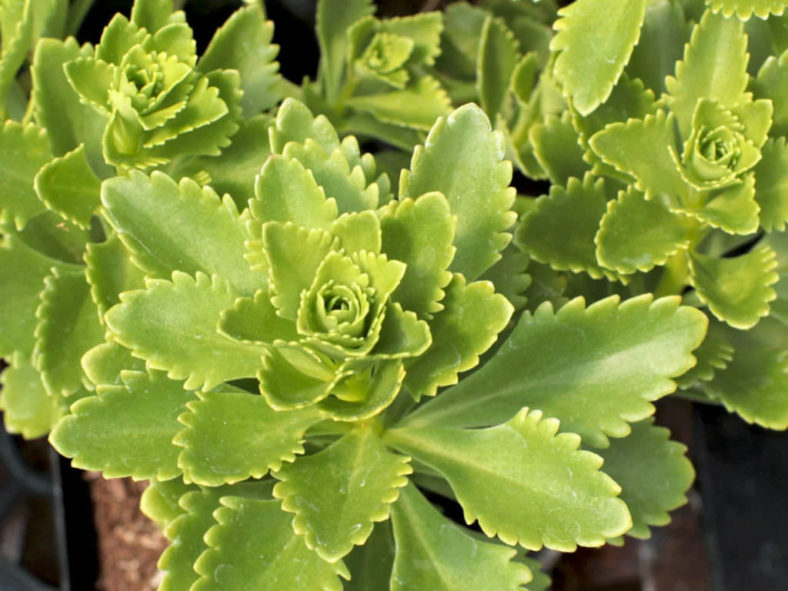Scientific Name
Phedimus ellacombianus (Praeger) H.'t Hart
Synonym(s)
Aizopsis ellacombeana, Phedimus ellacombeanus, Sedum ellacombeanum, Sedum ellacombianum, Sedum kamtschaticum subsp. ellacombeanum, Sedum kamtschaticum subsp. ellacombianum
Scientific Classification
Family: Crassulaceae
Subfamily: Sempervivoideae
Tribe: Umbiliceae
Genus: Phedimus
Etymology
The specific epithet "ellacombianus (el-la-komb-ee-AY-nus)" honors Henry Nicholson Ellacombe (1822–1916), plantsman, author of many books on botany and gardening, and mentor to the great plantsman Edward Augustus Bowles (1865-1954).
Origin
Phedimus ellacombianus is native to Japan and Korea.
Description
Phedimus ellacombianus, formerly known as Sedum ellacombianum or Sedum kamtschaticum subsp. ellacombianum, is an attractive succulent that forms compact mounds of bright green leaves. It spreads quickly and can grow up to 6 inches (15 cm) tall. The leaves are thick and fleshy with scalloped edges, measuring up to 1.6 inches (4 cm) long and 0.8 inches (2 cm) wide.
The yellow, star-shaped flowers appear in clusters just above the foliage in spring.
This species is often confused with the very similar Phedimus kamtschaticus. Sedum latiovalifolium, recently described as a new species, is tentatively placed in the synonymy here.

How to Grow and Care for Phedimus ellacombianus
Light: These light-loving plants will tolerate light or partial shade but prefer full sun and grow best in warmer environments.
Soil: Phedimus thrive in any well-drained soil. Good drainage is critical for preventing root rot or fungal diseases.
Hardiness: Phedimus ellacombianus can withstand temperatures as low as -30 to 40 °F (-34.4 to 4.4 °C), USDA hardiness zones 4a to 10b.
Watering: The best way to water your Phedimus is to use the "soak and dry" method. Get the soil completely wet, and then wait until the soil is dry before watering again.
Fertilizing: Feed with low-balanced fertilizer to keep your plants happy and healthy. Use a diluted dose of half the strength recommended on the package.
Repotting: Repot your plants when they outgrow their current pot by moving them to a larger container to hold the plant better.
Propagation: Phedimus can be grown from seeds, division, or stem cuttings.
Learn more at How to Grow and Care for Phedimus.
Toxicity of Phedimus ellacombianus
Phedimus plants can be mildly toxic to humans and animals.
Links
- Back to genus Phedimus
- Succupedia: Browse succulents by Scientific Name, Common Name, Genus, Family, USDA Hardiness Zone, Origin, or cacti by Genus
Photo Gallery
Click on a photo to see a larger version.


